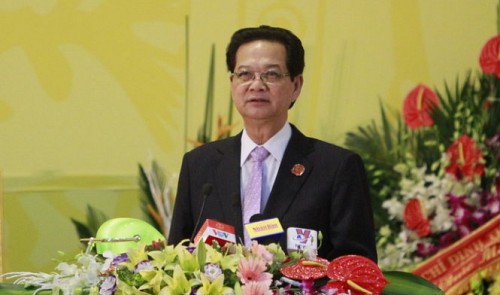Half Vietnam’s apparel exports go to U.S.
Half Vietnam’s apparel exports go to U.S.
Vietnam exported nearly US$17 billion worth of apparel in the first nine months of this year, with the U.S. market accounting for almost half of it, according to the General Department of Customs.
Data of the customs authority showed textile-garment exports to the U.S. reached US$8.33 billion in January-September, up 13.6% year-on-year. The growth was higher than the sector’s average increase of 10%.
The U.S. market was followed by Japan and South Korea, which imported apparel products worth US$2.03 billion (up 6% year-on-year) and US$1.54 billion (up 0.6%) from Vietnam in the period respectively.
Domestic apparel makers expect their exports would increase in the coming years as more free trade agreements (FTA) between Vietnam and foreign partners will come into force, especially the Trans-Pacific Partnership (TPP) trade pact.
Tariff incentives offered by the TPP are expected to help Vietnamese enterprises step up shipments to the U.S. and Japan. Vietnam’s apparel is currently subject to 17-30% U.S. tariffs but the rates will be gradually brought down to 0% in the TPP.
Vietnam’s apparel exports to the U.S. have inched up 12-13% annually in recent years while U.S. imports from other markets have risen by only 3% on average. Vietnam makes up just 9% of America’s total apparel imports, so there is room for Vietnamese apparel firms to boost shipments there.
The European Union (EU) will remain one of the key export markets for Vietnamese apparel. Once the EU-Vietnam FTA takes effect, Vietnamese apparel exporters will have a competitive edge in the EU market as the tariff will go down to 0%.
With the FTAs between Vietnam and South Korea and the Eurasia Economic Union, Vietnamese apparel manufacturers will have more opportunities to speed up exports if they meet certain conditions.
In addition to tariff reductions and exemptions, the U.S.-led TPP’s “yarn forward” rule of origin which requires enterprises to use yarn and cloth made in Vietnam or imported from 11 other TPP member states will promote the development of material sources for the industry in this Southeast Asian country.
However, the biggest challenge is Vietnam’s apparel industry’s heavy dependence on material imports, especially from China. According to the Ministry of Industry and Trade, almost 50% of Vietnam’s apparel materials are imported.
As China does not join the TPP, Vietnamese enterprises must reduce its reliance on materials imported from the northern neighbor if they want to enjoy tax incentives when exporting products to the U.S.
According to the Vietnam Textile and Apparel Association (Vitas), foreign-invested firms make up around 25% of more than 3,000 textile and garment enterprises nationwide but contribute over 60% of the country’s apparel export turnover.




















